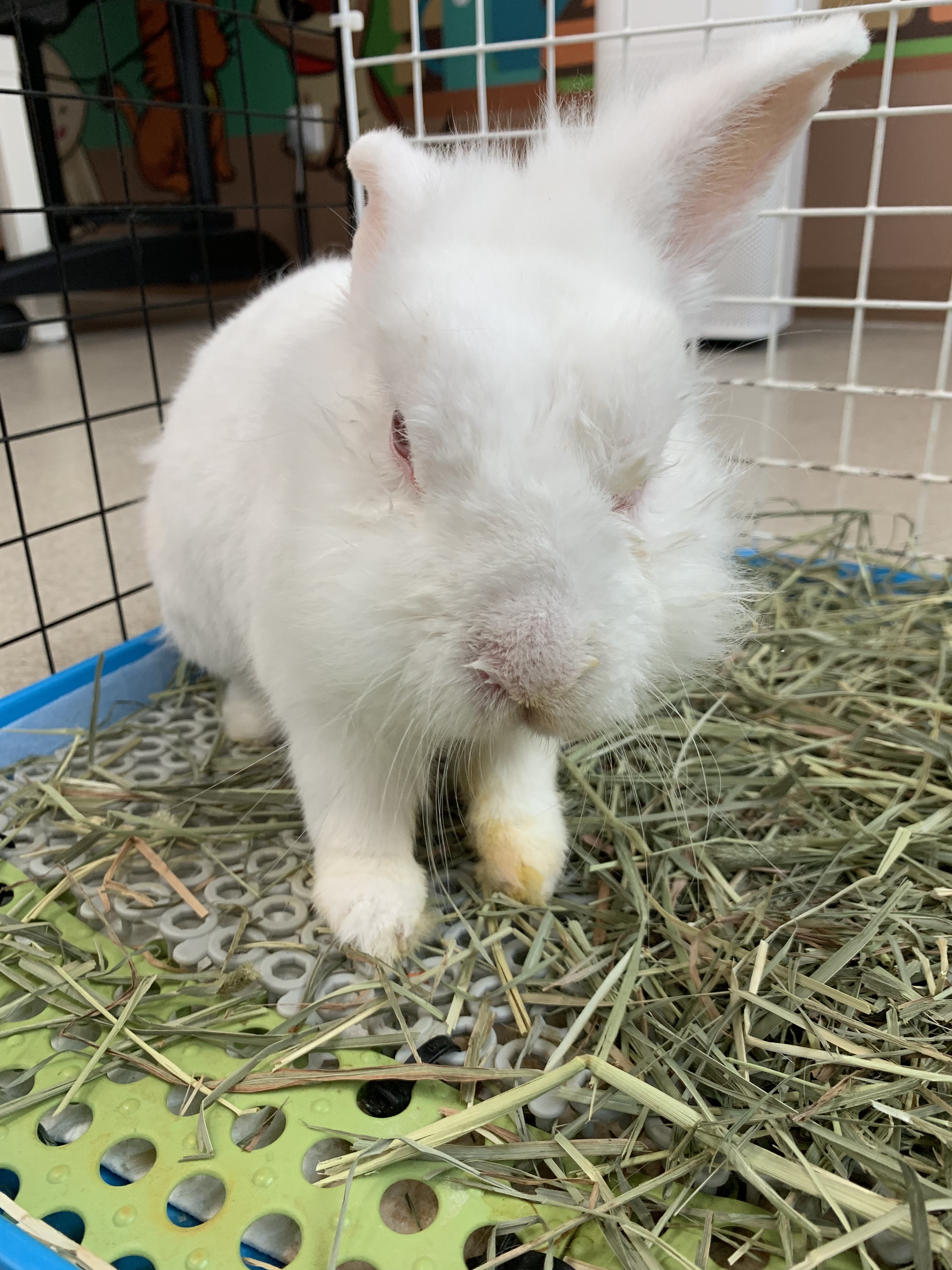Diet
It is important to feed your little critter the proper nutrients to keep it healthy. This means fresh hay, rabbit pellets, green leafy vegetables, and clean drinking water.
Hay is a main source of food for pet rabbits and should comprise 70% of their diet. It keeps their tummies healthy with copious amounts of fibre and helps to grind down their fast-growing teeth. Ensure that good-quality hay is always available for proper nutrition and environmental enrichment.
Remember to provide your rabbits with leafy green vegetables and a small amount of rabbit pellets as well. It is always best to work with your veterinarian to manage your pet rabbit’s diet and weight.
Though most people think of rabbits as carrot-chomping creatures, too many carrots can be bad and even fatal for them. Carrots and fruit are high in sugar, which can ferment in your rabbit’s digestive tract and cause gastric bloat or even escalate to a life-threatening emergency. Too much sugar can also cause obesity and other related health issues.
Habitat
Just like us, our pets want their living spaces to be safe, comfortable and mentally stimulating.
Since rabbits originally hail from grasslands, meadows and mountainous regions, it is only natural for them to want to leap around in their free time. A large, open and well-ventilated playpen will offer them room for play and exercise. The more space, the better!
As well as open spaces, they like safe places to burrow into. Give them access to hiding spots that they can retreat to if they are feeling afraid or simply want some alone time.
Health
It is recommended that you take your rabbit to the vet every year for a health check-up and vaccinations. Make sure to get both your male and female rabbits sterilised, too. Sterilisations prevent diseases of the reproductive tract, unwanted behaviours, and unwanted litters. Female rabbits especially are prone to aggressive uterine cancers, so speak to your vet early on to plan when to sterilise your rabbit.
At home, you can do your part by checking your rabbit’s coat, eyes, and nose for mucus or discharge. Take note if there is any dandruff, spots, or parasites which may be disturbing your rabbit. Get in touch with your vet if there are any changes in your rabbit’s behaviour or food preferences. In general, it is best to keep a regular record of your rabbit’s behaviour and diet in case you need to follow up with your vet.





_ziyang.jpg?sfvrsn=abbf2a1b_3/rabbit-(nolla)_ziyang)


